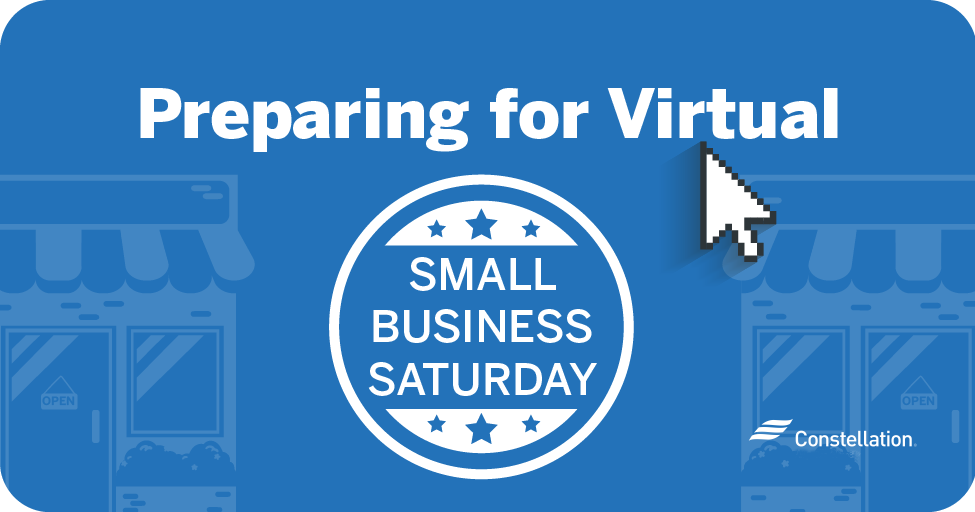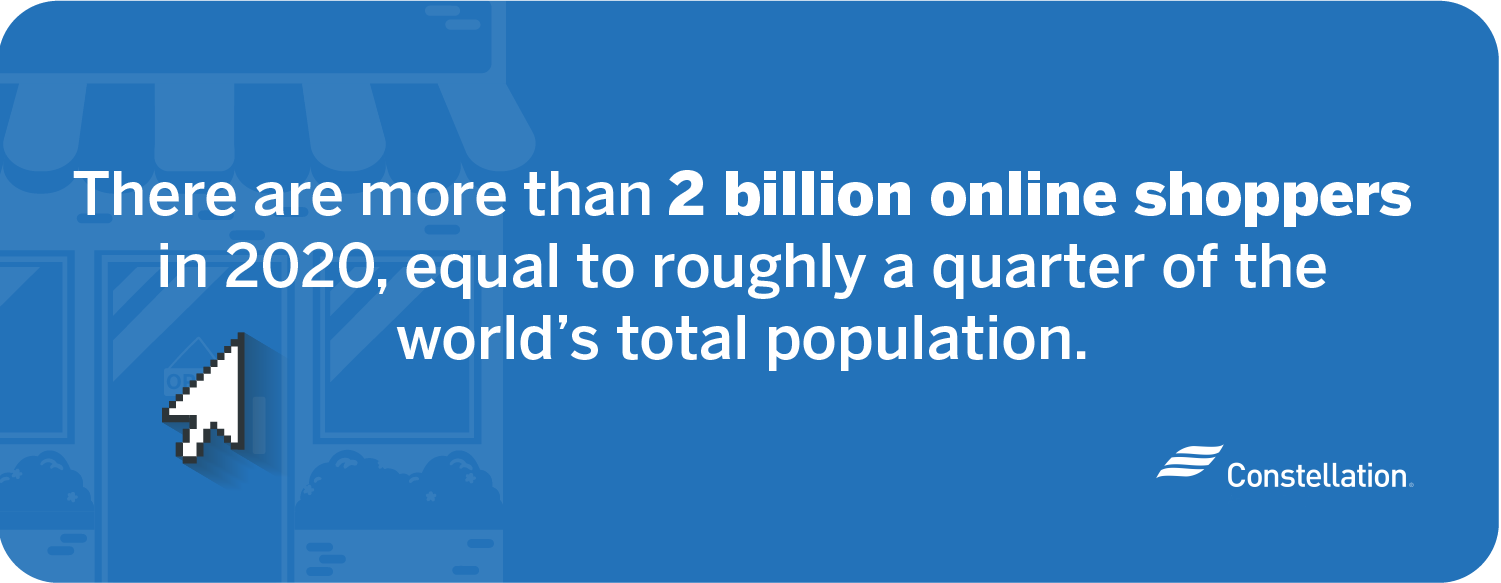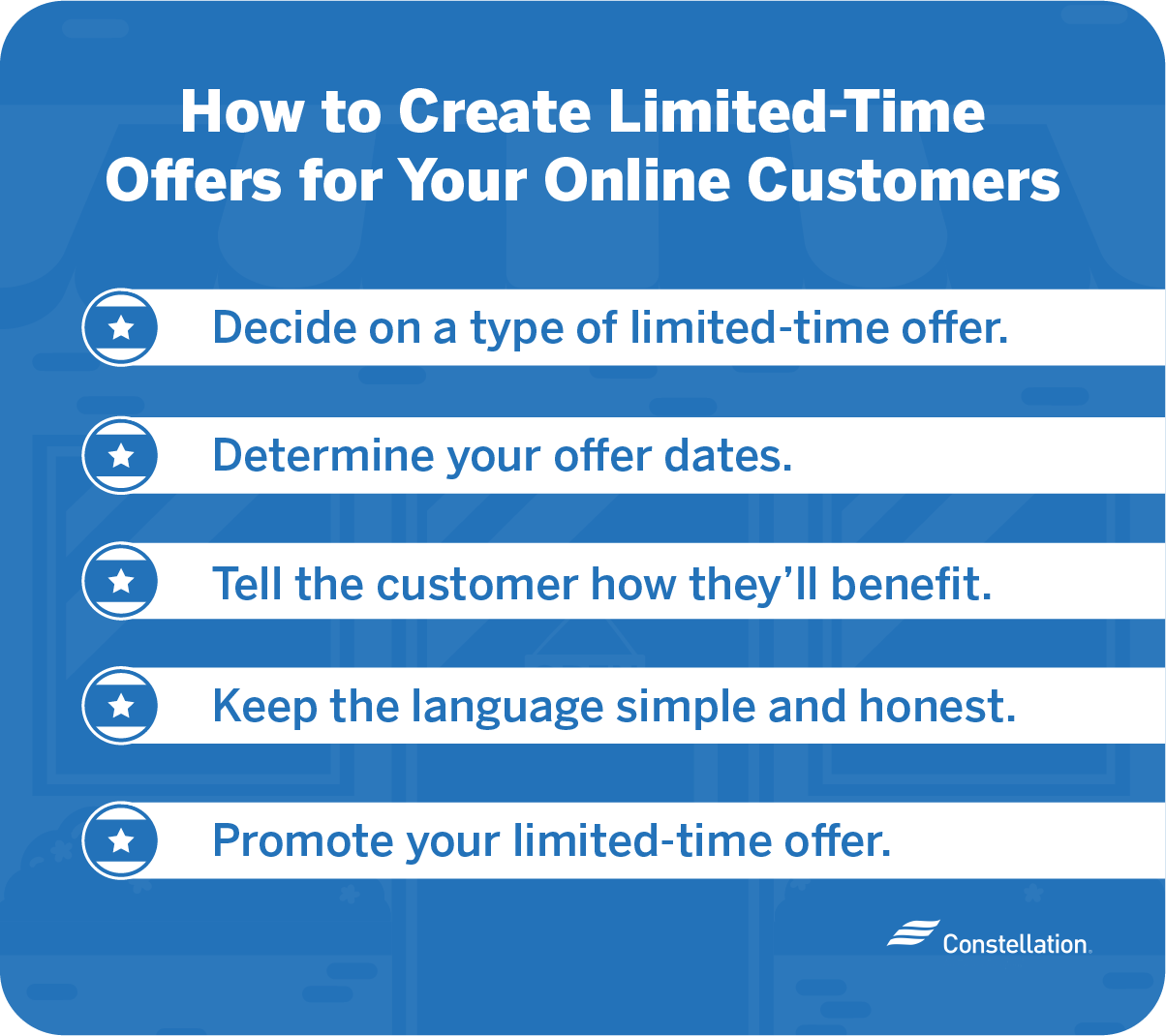
- Category:
Small Business Energy Savings -
Last updated:
October 24, 2022
Preparing for Virtual Small Business Saturday
Small Business Saturday 2022 is coming up on November 26. With the recent rise in online shopping, participating small-business owners may need to adapt their strategies for the day. If you prepare for Small Business Saturday in advance, you can help set your business up for a successful day. And that can help position your company for a profitable winter holiday season and a strong finish to 2022.
Online shopping statistics to consider
As online shopping rates continue to increase, many small-business owners are moving their businesses online in order to better meet their customers’ needs. Here are some online shopping statistics that illustrate just how much consumer trends are shifting:

- In 2019, consumers spent $142.5 billion shopping online during the holiday season.
- Of this $142.5 billion, $3.6 billion alone was spent on Small Business Saturday in online sales.
- There are more than 2 billion online shoppers in 2020, equal to roughly a quarter of the world’s total population.
- E-commerce sales are anticipated to hit $4.2 trillion by the end of 2020.
Moving your small business online
Moving your business online is a great way to make the most of your virtual Small Business Saturday. To begin your digital transformation, you may want to set up an e-commerce site that features an inventory of your products or services. An online inventory provides the benefit of allowing customers to make purchases from anywhere at any time.
How to set up an e-commerce website for your small business
Setting up an e-commerce website for your business doesn’t have to be a long and complicated process. And once it’s done, you’ll not only be able to move your Small Business Saturday online but also have a whole new way of engaging your customers and generating sales. Here’s how to create an e-commerce website:
- Choose an e-commerce platform. E-commerce platforms such as Shopify, BigCommerce and Squarespace allow you to easily create a website for your business. Some platforms even offer perks like 24/7 customer support and assistance with inventory management.
- Pick a plan that suits your business’s needs. Different e-commerce platforms will have different plan offerings, so it’s important to choose the one that works best for you. You’ll want to consider factors like the size of your business and the features that are most relevant to you.
- Decide on a domain name. Your domain name is the internet address customers will use to find your store. Most e-commerce platforms give you the choice of purchasing a domain name from them or connecting a domain that you already own.
- Select and customize an e-commerce template. Customizing the design is an important part of setting up your e-commerce website. Be sure to consider the features you need for your site, such as small-business chatbots, and the way you want your customers to navigate the page.
- Add your products or services. After settling on a layout, you’ll need to add your products or services to your website. Adding product descriptions, details and photos can all help to improve your customers’ experience.
- Set up shipping options and select payment methods. There are several ways to collect payments from your e-commerce website, such as PayPal, Stripe and Apple Pay. The costs associated with online payment systems will differ, so be sure to compare before making your decision. You’ll also want to choose a shipping courier and decide where you’re willing to ship your products.
- Preview and publish your e-commerce site. Before launching your e-commerce site, it’s helpful to preview it and make sure it works and looks right. Some things to check include your business’s contact details and whether your site looks okay on phones and tablets. Once you know everything is in working order, you’re ready to publish!
How to create limited-time offers
Creating a limited-time offer can be a useful Small Business Saturday promotion idea. They can not only bring attention to your e-commerce website but also create a sense of urgency that helps drive purchases on the spot. To create limited-time offers for your small business, consider taking the following steps:

- Decide on a type of limited-time offer. There are many different kinds of limited-time offers, such as first-time purchase and one-time offers. Take some time to think about which would be best for the products or services your business offers.
- Determine your offer dates. A limited-time offer doesn’t have to last for just a day. For example, you could begin a limited-time offer on virtual Small Business Saturday and then continue it afterward to keep your customers’ interest.
- Tell the customer how they’ll benefit. When creating a limited-time offer, it’s important to let the customer know how they’ll benefit from the purchase. Use actions words that might appeal to potential customers’ emotions and self-interest. You need a call to action.
- Keep the language simple and honest. It shouldn’t be a challenge for your customers to find out what you’re offering. Keep the language of your limited-time offer precise and transparent.
- Promote your limited-time offer. To boost the success of your limited-time offer, try promoting it in your store, on social media and on your e-commerce site (if you have one). Some e-commerce sites will even have features to help you integrate special offers.
What to do if you won’t have an e-commerce website for Small Business Saturday
Not every small business is in the position to develop an e-commerce website yet and take their Small Business Saturday online. But that doesn’t mean you can’t make attractive offers to your customers and enjoy the benefits of the retail holiday. With a little ingenuity, brick-and-mortar businesses can thrive over the biggest shopping weekend of the year. You can try any number of marketing strategies:
- Businesses without an e-commerce website can send email blasts or share social media posts with special deals on products or services.
- Service-based businesses could promote gift card sales or begin booking for the future at a discounted price.
- Restaurants may decide to advertise delivery specials.
- Retailers might offer curbside service for customers who order ahead.
Reaching your customers digitally
It’s important to know how to reach your customers online. By improving your small business’s online presence and establishing a virtual connection with your customers, you’ll gain a better understanding of who they are and be able to meet their needs more effectively.
Some common strategies for how to reach customers digitally include email lists, blogs, surveys, reviews and social media platforms. For example, you could have your routine customers take a survey about what they like most about your business. Or you could ask them to leave an honest review of your product or services.
How to engage customers through social media
Today, approximately 7 in 10 Americans use some form of social media. For businesses, this creates a great opportunity to interact with customers and offer more purchasing opportunities. To better engage your customers on social media, consider the following strategies:
- Understand your target audience. By knowing who your target audience is and the social media platforms they use, you can create content and use language that will attract them to your business.
- Develop a social media strategy. One business planning tip is to determine your social media goals and set a plan for achieving them. Without goals, it will be difficult to track your growth.
- Share valuable content regularly. The amount of content you share will depend on your business’s goals, but routinely posting valuable content will help keep your customers engaged over time.
- Get your customers involved. The content you share doesn’t have to be passive. To improve your small business’s online presence, consider getting your customers involved with things like contests, polls and questions.
- Place an emphasis on accessibility. Some ways to make your social media content accessible to everyone include using image descriptions, adding closed captions to videos and writing in simple language.
- Use data to drive decisions. Most social media sites offer analytic tools that tell you how many likes, clicks, shares and impressions your content is receiving. This is valuable data that can be used to help inform your social media decisions moving forward.
Getting repeat customers online
You can leverage the traffic your e-commerce site receives on virtual Small Business Saturday to help get repeat customers online. There are many reasons shoppers become repeat customers, such as ease of purchase, loyalty programs and product or service satisfaction. In short, the better the user experience, the more likely you are to hold on to your customers.
Another strategy for getting repeat customers online is to collect customer data throughout the purchasing process. With this data, you can better understand who your customers are and begin crafting offers that are specifically tailored to your audience.
How small-business owners can collect customer data responsibly
There are several ways for small businesses to collect customer data. For example, you could offer an incentive to customers for providing data when subscribing to your email list or rewards program.
Customer data is sensitive information and should always be handled with care. It’s important that you let your customers know how you plan to keep it safe and use it responsibly.
What customer information should you collect?
When collecting customer data, it’s best to start with basic information:
- Name
- E-mail address
- Mailing address
- Age
- Birthday
- Spending patterns
- Purchase history
- Special offer and coupon preferences
Once you know what customer information to collect and have some to work with, you can begin organizing and identifying trends in the data. This will give you a more detailed understanding of your customer base and help guide your future marketing and promotional efforts.
Getting involved in your local community
Now more than ever, it’s important to support other small businesses and keep money in the local economy when possible. To that end, Small Business Saturday provides an excellent opportunity to build relationships with other local businesses in the community.
You can prepare for Small Business Saturday by developing mutually beneficial partnerships with other community-based businesses. As an example, restaurants could do cross-promotional advertising with a nearby bakery to drive traffic to both locations. Or a photography studio could help local businesses create images for their websites in exchange for a shoutout at their physical location and on social media. There are many ways you could work together with other local small businesses to offer unique opportunities and events that bring the community together — even virtually.
How small businesses can survive in today’s economy
Improving your small business’s online presence and taking a community-based approach can help you make the most of this year’s event. There are many benefits of Small Business Saturday. It’s an opportunity to promote your brand, develop new business partnerships, prepare for the holidays, get to know new customers and — perhaps most importantly — help keep your local community thriving. And as shopping continues to move online, the changes you adopt now can serve you well into the future.




